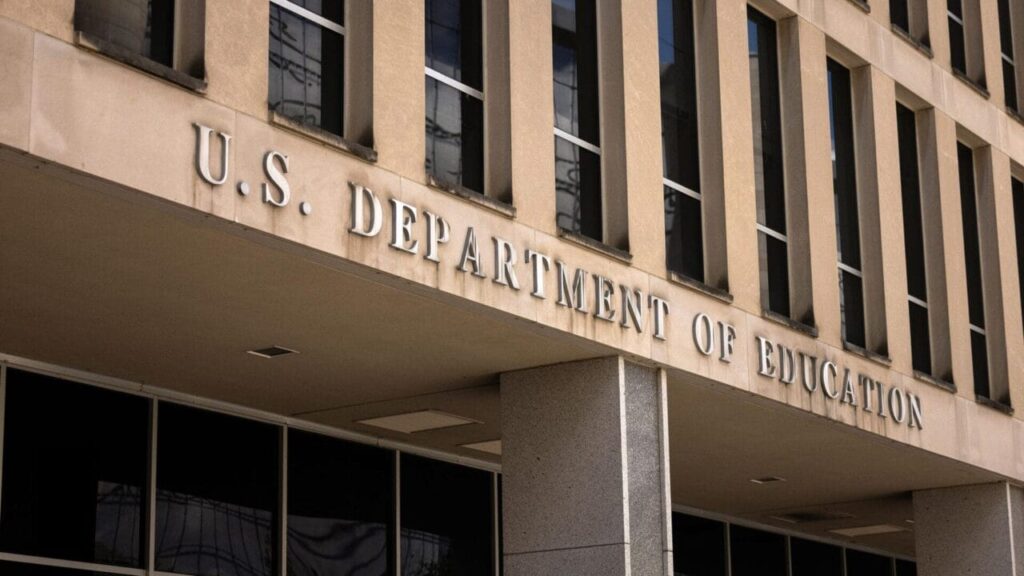Supreme Court gives green light on Education Department layoffs
INDIANAPOLIS (WISH) — A Supreme Court ruling is allowing the Trump Administration to proceed with its plan to carry out mass layoffs at the U.S. Department of Education.
The court’s 6-3 decision on Monday puts the lower court order on hold while the legal challenges play out. Lawyers for the Trump Administration say they are not closing the Department of Education, just downsizing it.
Erica Meltzer is the National Editor for WISH-TV’s news gathering partners at Chalkbeat and joined Daybreak on Tuesday to discuss her recent article on the subject and help people understand what could happen next.
“The Education Department was created by congress only congress can get rid of it. And that’s the needle that these attorneys for the administration are trying to thread. But when these layoffs were first announced back in March, Linda McMahon – Education Secretary, said they were the first step towards closing down the department. And so, by saying that these layoffs can proceed, it does pretty significantly change the level of service to the department’s able to offer … the size of the department. And I think there is widespread fear that this will – while it is just one step, it is not closing the department – there is a lot of fear and I think somewhat understandably so, that this is setting us down a path of no return,” Meltzer explained.
“Today, the Supreme Court again confirmed the obvious: the President of the United States, as the head of the Executive Branch, has the ultimate authority to make decisions about staffing levels, administrative organization, and day-to-day operations of federal agencies,” McMahon said in a July 14 statement.
Initial action from the Trump Administration in the spring had around 1,400 employees in the Department of Education removed from their positions. As the process played out in court, these workers have been on paid leave but not necessarily working in their roles. It is possible that these positions will be officially on the chopping block next.
“So the most heavily hit departments were the Office for Civil Rights with the closure of half of the regional offices, Federal Student Aid, which oversees student loans and Pell Grants – and things like that, and the Institute for Education Sciences,” Meltzer said. “And by all accounts, we are already seeing impacts like more civil rights cases being dismissed without an investigation. Cases that were in the pipeline, people are just having a very hard time getting answers about their complaints. And we’re hearing from colleges that they’re having a very hard time reaching people in the Federal Student Aid Office. We also know that the Trump administration is pushing borrowers out of some of the repayment plans that the Biden administration had rolled – they want people to switch into less generous repayment plans, but the processing times on those have gotten very long. And so, I think some of those impacts are things that regular people will feel.”
She says students and teachers might not notice an immediate impact. However, changes to this extent do not happen in a vacuum.
“The Trump administration has been withholding different funding streams. For example, money that helps school districts support English learners is being held up, grants have disappeared. And something we’re hearing really consistently is that people can’t get answers about what they’re supposed to do … Or sometimes someone has a grant to do – some kind of education research – and it gets canceled and they can’s even reach someone to figure out what their obligations are to kind of close out that project. There’s also been a lot of attorneys laid off in the Education Department, and that concerns a lot of observers that you don’t have that sort of internal check and balance that a federal department typically would have. And I think when we think of all of these spillover effects, I think this is a reason there was this was a 6-3 decision.”
The court did not explain its decision in favor of President Trump, which would be customary in emergency appeals. However Justice Sonia Sotomayor wrote a dissent saying her colleagues were enabling legally questionable action on the part of the administration.
“When the Executive publicly announces its intent to break the law, and then executes on that promise, it is the Judiciary’s duty to check that lawlessness, not expedite it,” Sotomayor wrote for herself and Justices Ketanji Brown Jackson and Elena Kagan.
Watch the full interview in the video above and read Erica Meltzer’s article here.
About The Author
You may also like
-
Homeless encampment expands in Indianapolis neighborhood
-
Former Muncie woman sentenced to 30 months for $930,000 in FAFSA fraud
-
32-year-old Elwood man charged with child exploitation
-
Prosecutor criticizes proposed state control of Indianapolis Mile Square
-
Colts hungry to prove themselves as Training Camp begins

